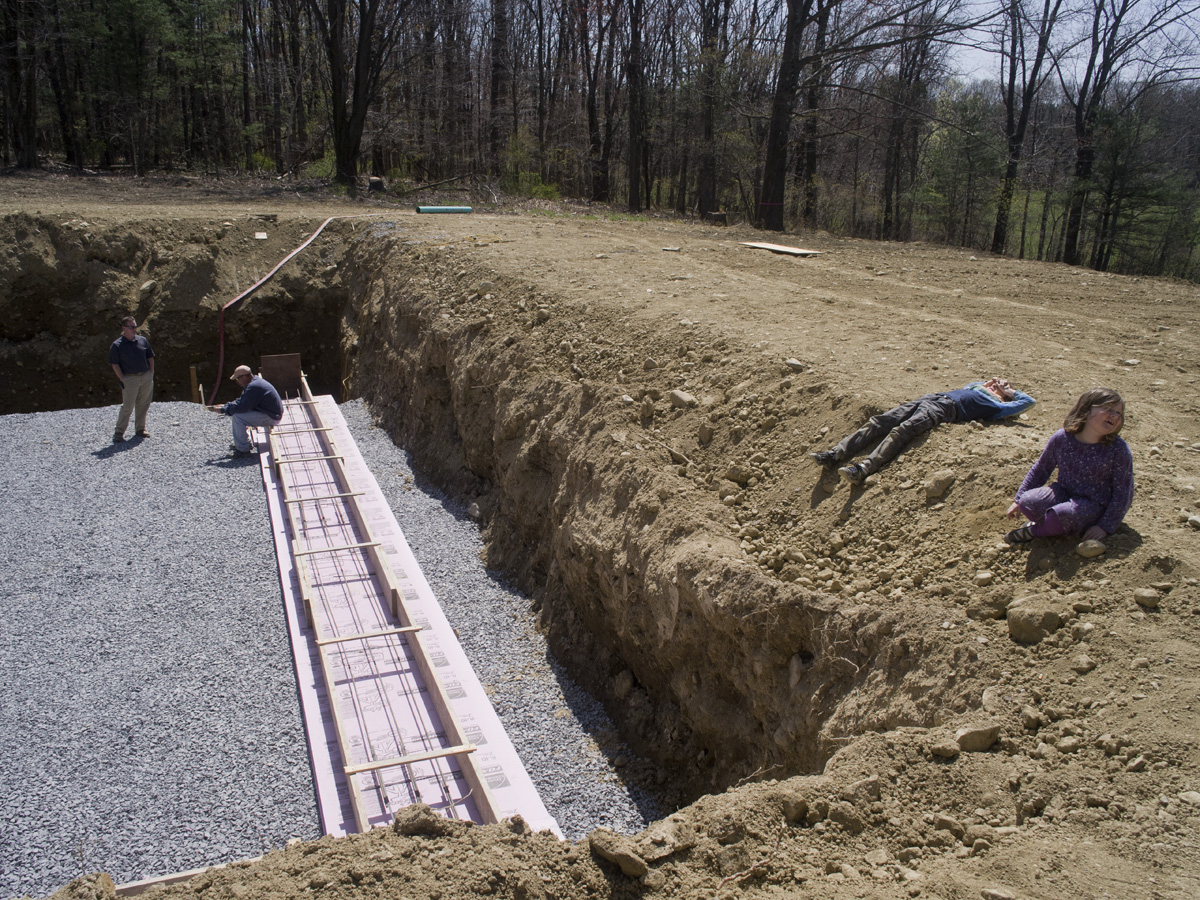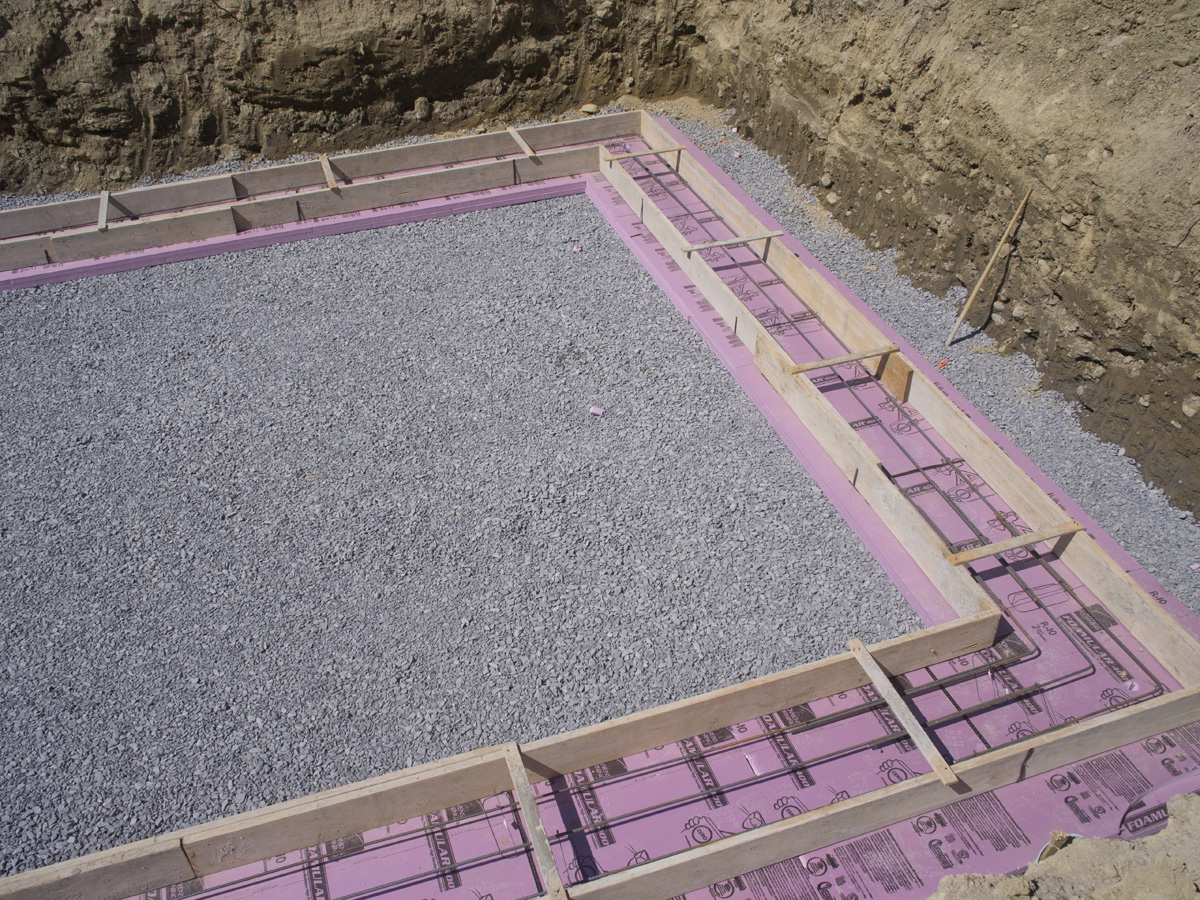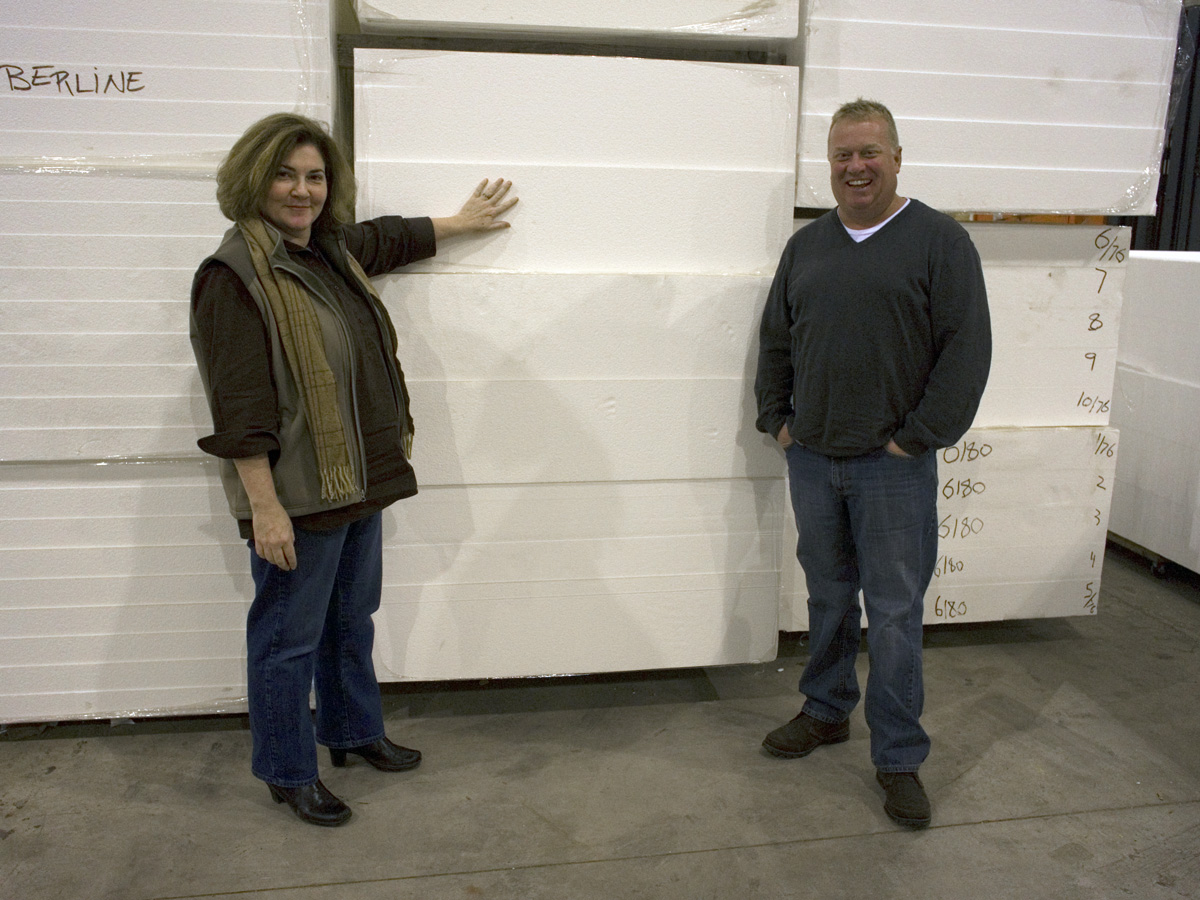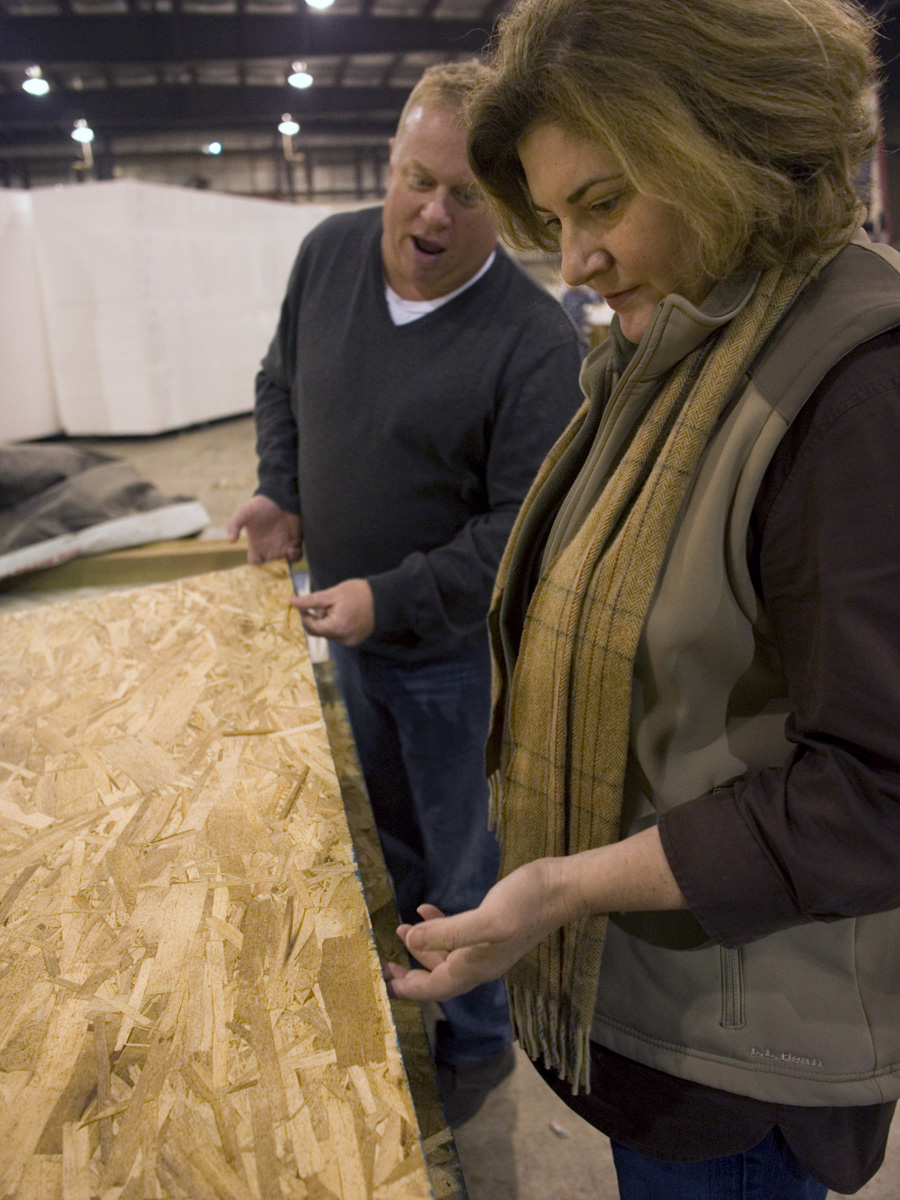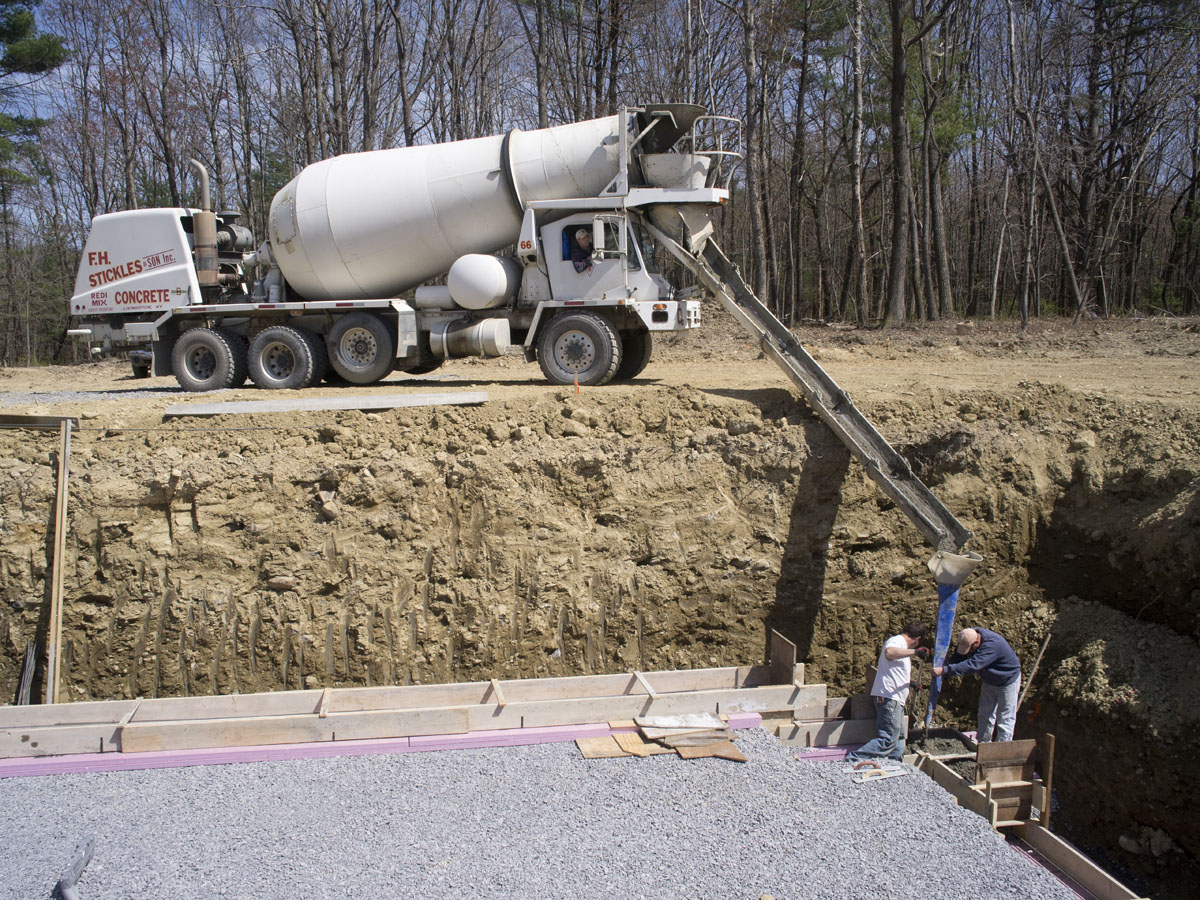 The site surrounding the excavation was prepared so that the concrete truck could drive around the edge of the excavation throughout the pour.
The site surrounding the excavation was prepared so that the concrete truck could drive around the edge of the excavation throughout the pour.
Category Archives: 3. Insulation
Waiting for the pour
Forms with rebar ready to fill
Layering insulation under the footing
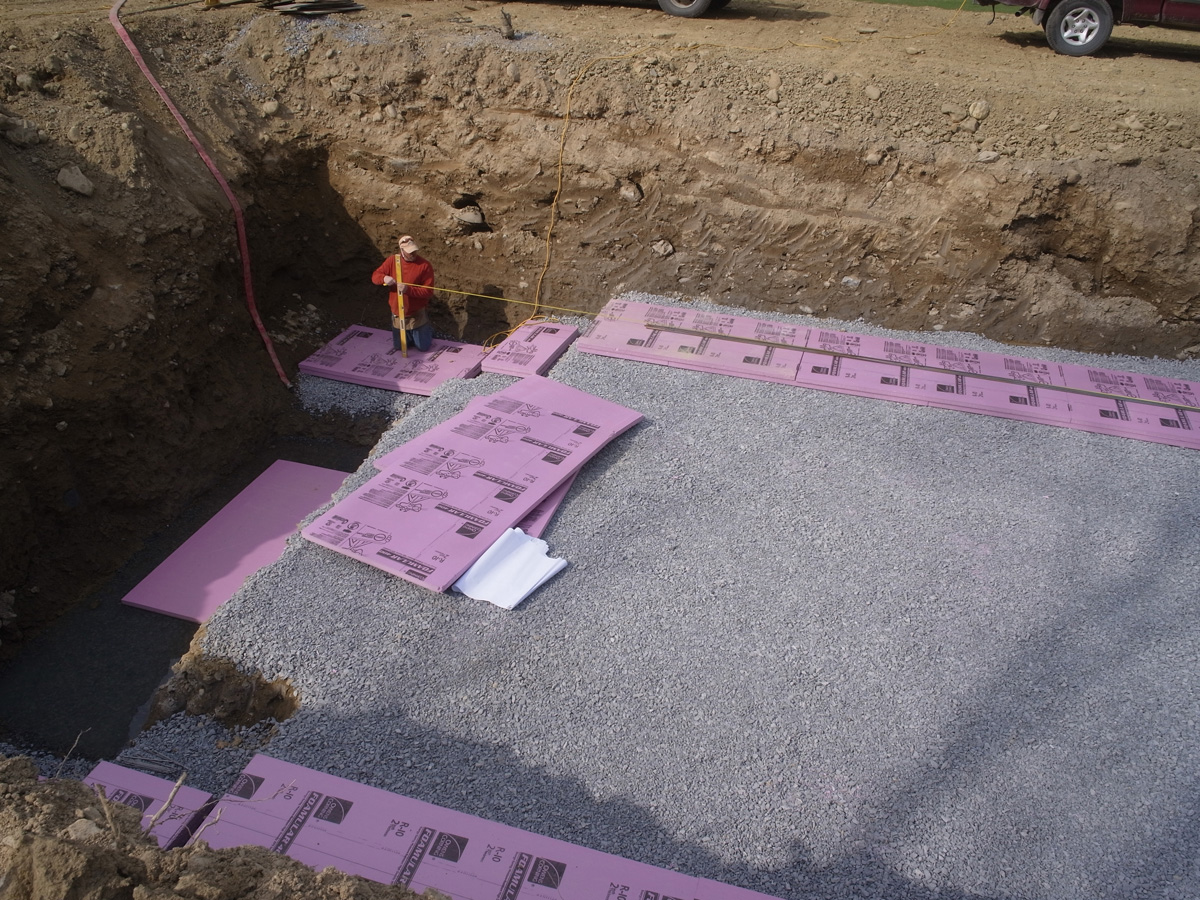 Dan Gregg, the foundation subcontractor, sets the the double layer of 2- inch thick foam sheets in an overlapping arrangement. This Formular 400 rigid foam insulation is XPS and will be used in limited amounts where the compressive strength is required.
Dan Gregg, the foundation subcontractor, sets the the double layer of 2- inch thick foam sheets in an overlapping arrangement. This Formular 400 rigid foam insulation is XPS and will be used in limited amounts where the compressive strength is required.
SIPs cookie gets a tastier grey filling
Imagine a cookie sandwich with sheets of wood outside and foam inside. Big cookie panels (SIPs) will become the walls and roof of our gingerbread house. Yesterday we decided to try a new-and-improved recipe for the foam filling.
We were happy with our conventional white rigid foam until Jeff Brooks at Vermont Timber Frames started talking up Neopor and snagged us an upgrade at no additional cost. Neopor is an advanced type of EPS with graphite added. Because Neopor offers better insulation, we can slim down all around — thinner SIPs and thinner glulam beams to hold them up. Switching to Neopor will save us money short-term on construction materials and long-term on utility bills. The R-value is better than ever, with our 10.25″ wall panels increasing from R-37 to R-43 and the 12.25″ roof panels up from R-45 to R-52.
Neopor is all over the green building blogs. In comparison to alternative products, it offers a greater benefit at a lower cost, along with less of an environmental burden, say manufacturers. Fewer raw materials are needed to achieve the same insulating performance. Better insulation, less material.
Birthplace of our walls and roof
We visited Vermont Timber Frames last Friday (Nov 4). Jeff Brooks took us on a tour of the fabrication plant, where stacks of oriented strand board and blocks of solid white EPS foam await lamination. Once glued together, each 8′ x 20′ panel is cut to size and then delivered to the building site and assembled.

